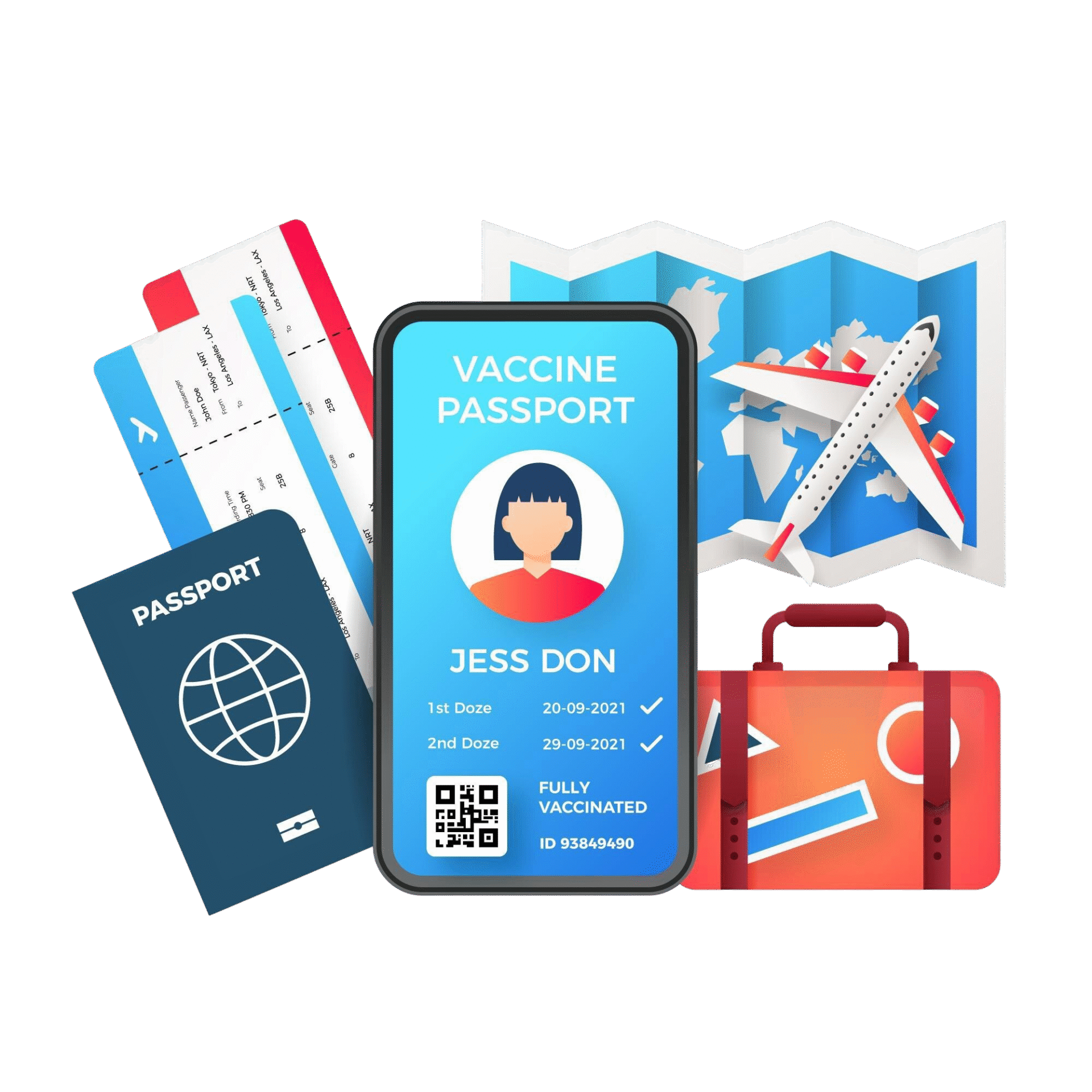Reapplying After a Schengen Visa Rejection
A Schengen visa refusal is frustrating, but it isn’t final. With a clear plan, stronger documents, and a focused explanation, most UAE applicants can successfully reapply. This practical guide walks you through exactly how to rebuild your file after a refusal in Dubai or Abu Dhabi, what to fix, and how UrgentSchengen can support you at every step.
Note: The Schengen Area currently includes 29 countries. This guide covers short‑stay (C‑type) tourist and business visas only.
- Reapplying After a Schengen Visa Rejection
- Before You Reapply: Read Your Refusal The Right Way
- Appeal Or Reapply—Which Is Better?
- Visa Requirements (What Must Improve On Your Second Attempt)
- Documents Required For A Strong Reapplication
- Visa fees
- Reapplication strategy by refusal reason (what to fix)
- Sample structure for your reapplication cover letter
- How UrgentSchengen helps after a refusal
- FAQs
Before You Reapply: Read Your Refusal The Right Way
Your refusal form is your roadmap. It specifies the legal ground(s) ticked by the officer, typically related to purpose of travel, financial means, travel medical insurance, document credibility, or doubts about return to the UAE. Read it line‑by‑line, check the reason for rejection and extract exactly what needs to be repaired. Do not submit the same file again. Reapplication success depends on showing what has changed since the refusal.

Appeal Or Reapply—Which Is Better?
Both options exist. An appeal challenges the decision and follows formal rules and deadlines set by the country that refused your application. A reapplication is usually faster if the issues are documentary (for example, weak itinerary, non‑compliant insurance, limited funds, or missing proofs). If your refusal cites substantive risk concerns (for example, intention to return), consider professional guidance on whether to appeal or reapply with significantly enhanced evidence. In either case, your explanation must be specific and evidence‑driven.
Eligibility for UAE Residents
- You can reapply from the UAE if you are legally resident in the UAE and your main destination is within the Schengen Area.
- Emirati citizens are visa‑exempt for short stays; this guide chiefly serves expatriate residents who require a visa.
- Apply to the country of your main stay (most nights). If nights are equal, apply to the country of first entry.
Types of Visa (for Reapplication)
- Tourist (C‑type) short‑stay: single, double, or multiple entry for leisure travel.
- Business (C‑type) short‑stay: meetings, conferences, training, trade fairs with proper invitations.
Visa Requirements (What Must Improve On Your Second Attempt)
- Clear and consistent travel purpose, supported by a realistic itinerary and bookings.
- Adequate financial means with transparent bank history.
- Valid travel medical insurance covering all Schengen states for your full stay (including emergency medical care, hospitalization, and repatriation).
- Valid passport (with sufficient validity beyond Schengen exit and blank pages).
- Evidence of accommodation, flights, and strong ties to the UAE (employment, business, family, housing).
Correct consulate selection based on your main destination.
Documents Required For A Strong Reapplication
Prepare everything you would provide for a first‑time file—plus targeted upgrades that address the refusal:
- Completed application form and ICAO‑compliant photos.
- Passport + copies meeting validity rules.
- Round‑trip flight reservation and confirmed accommodation aligned with the itinerary.
- Travel medical insurance covering all Schengen countries for the entire trip.
- Personal bank statements (recent months), salary slips, and an updated employment letter/NOC that explicitly confirms your approved leave and expected date of return to the UAE.
- Proof of UAE residence and ties (residence visa page, tenancy contract or property evidence, dependent family documentation where relevant).
- For business trips: invitation letter on company letterhead, event registration, proof of commercial relationship, and who will bear the costs.
- Reapplication cover letter (critical): a concise, factual explanation that cites the refusal reason(s) and clearly demonstrates how you have corrected each point.
- If sponsored: sponsor’s bank statements, relationship proof, and a signed undertaking that covers costs, with documents showing lawful income.
- Optional strengtheners: travel history pages, company trade license (owners), updated trip budget, day‑by‑day plan, confirmed intra‑Schengen transport (trains/flights).
How to Apply (Dubai/Abu Dhabi Reapplication Process)
- Map your main destination and travel dates precisely.
- Identify the exact refusal grounds and list the documents needed to fix each one.
- Rebuild your itinerary: ensure nights, cities, and routes are realistic and internally consistent.
- Secure compliant travel medical insurance that matches your dates.
- Refresh bank statements and salary confirmations; avoid unexplained cash deposits.
- Request a new employment letter/NOC referencing your approved leave and return date.
- Draft a targeted reapplication cover letter (keep it factual, not emotional).
- Complete the application form carefully; ensure all details match your documents.
- Book a new submission at the authorized channel indicated by the competent consulate in the UAE.
- Attend biometrics/appointment, submit your improved file, and be ready to provide any additional documents if requested.
- After decision, check visa details (dates, number of entries) immediately.
Processing time
Short‑stay applications are commonly decided in about 15 calendar days from the date of submission. Complex cases can take longer. Apply well in advance—up to 6 months before your intended travel.
Visa fees
Fees and service charges may change. Contact us for the latest details.
How To Avoid Rejection Or Delay in UAE
- Align purpose, bookings, and dates: tourism files shouldn’t look like business trips, and vice versa.
- Use one insurance policy that covers all Schengen states for the full trip duration.
- Demonstrate stable finances: steady salary credits, realistic balances, and a believable trip budget.
- Show strong UAE ties: employment, business, family, and housing documents.
- Choose the correct consulate: longest stay or, if equal, first country of entry.
- Keep everything consistent: names, dates, hotel addresses, flight times, and employer letter details should match across documents.
- Avoid last‑minute submissions: peak seasons around summer and school holidays see higher volumes.
- Never submit unverifiable or altered documents.
Reapplication strategy by refusal reason (what to fix)
- Purpose not justified
Strengthen your day‑by‑day plan, ensure accommodation corresponds to each city, attach event registrations, reservations, and (for business) a formal invitation with dates, venue, and contact details. - Insufficient means of subsistence
Provide recent bank statements with salary credits, a realistic travel budget, and if sponsored, the sponsor’s income proofs and relationship evidence. Avoid large, unexplained cash deposits. - Travel insurance not adequate
Buy a Schengen‑compliant policy that covers all countries for the entire stay and includes emergency medical care, hospitalization, and repatriation. Dates on the policy must match your itinerary. - Doubts about intention to return
Emphasize ties to the UAE: employment letter confirming your role, salary, approved leave, and return date; tenancy contract; evidence of dependents; business ownership documents if applicable. - Document reliability concerns
Replace provisional or unverifiable bookings with confirmations. Ensure all documents are authentic, traceable, and consistent. If an error occurred previously, acknowledge and correct it in your cover letter. - Wrong consulate / itinerary mismatch
Recalculate nights per country and apply to the main destination. If nights are equal, apply to the country of first entry. Make sure all bookings reflect that route.
Sample structure for your reapplication cover letter
Keep it to one page if possible, written in clear, respectful language:
- Applicant details: full name, passport number, UAE residence status, contact information.
- Trip snapshot: dates, countries/cities, main purpose (tourism or business).
- Reference to refusal: date of last decision and the reason(s) provided.
- How you have fixed each point: bullet each refusal ground and the new evidence enclosed.
- Financial plan: who pays, estimated budget, and attached proofs.
- Ties to the UAE: employment, family, property/lease, and planned date of return.
- Closing: request for reconsideration and confirmation that all information is accurate.
How UrgentSchengen helps after a refusal
- File audit and risk scoring to pinpoint exactly why the first application failed
- Tailored document strategy (tourist vs. business) and itinerary alignment
- Guidance on compliant travel medical insurance
- Persuasive reapplication cover letters that address each refusal ground
- End‑to‑end submission support in Dubai/Abu Dhabi and readiness for additional document requests
Speak to us for a free pre‑assessment and a customized checklist based on your route, dates, and profile.
Final Thoughts
A refusal is a setback—not the end of your Europe plans. Treat the refusal letter as a checklist, rebuild your file with precise, consistent evidence, and present a clear cover letter that proves what changed. If you want a second set of expert eyes—or full support from start to finish, UrgentSchengen is here to help you turn a “no” into a confident “yes.”
FAQs
How long does it take to get a Schengen visa from Dubai?
Usually 7–15 working days, but can take up to 30 days in peak seasons.
When should I apply for my Schengen visa?
At least 4–6 weeks before travel. Applications can be filed up to 6 months in advance.
Is there a fast-track Schengen visa option in Dubai?
Yes, some embassies (France, Germany) offer priority visas processed in 2–5 working days.
Can UAE citizens apply for a Schengen visa?
Emirati citizens don’t need a visa for short stays (up to 90 days). Expats in Dubai must apply.
What if my visa takes longer than 30 days?
It may be due to additional checks or missing documents.



